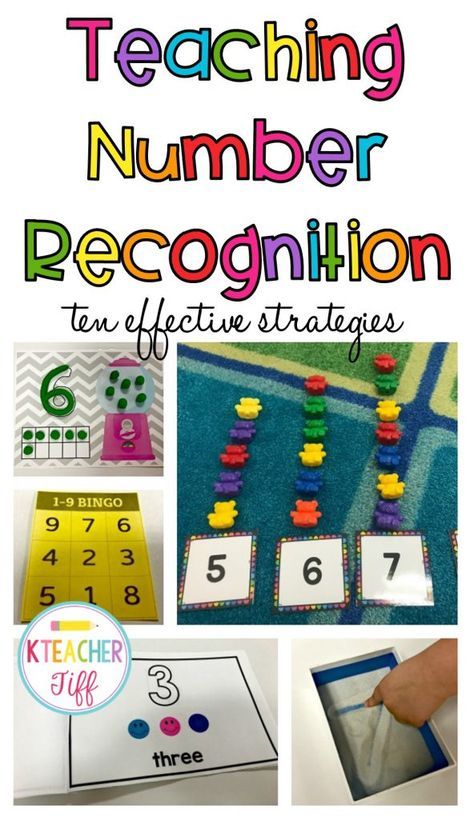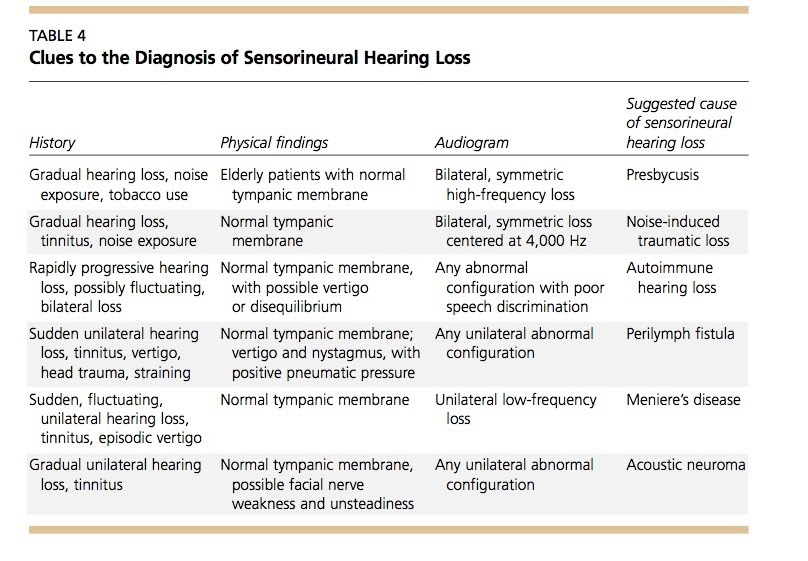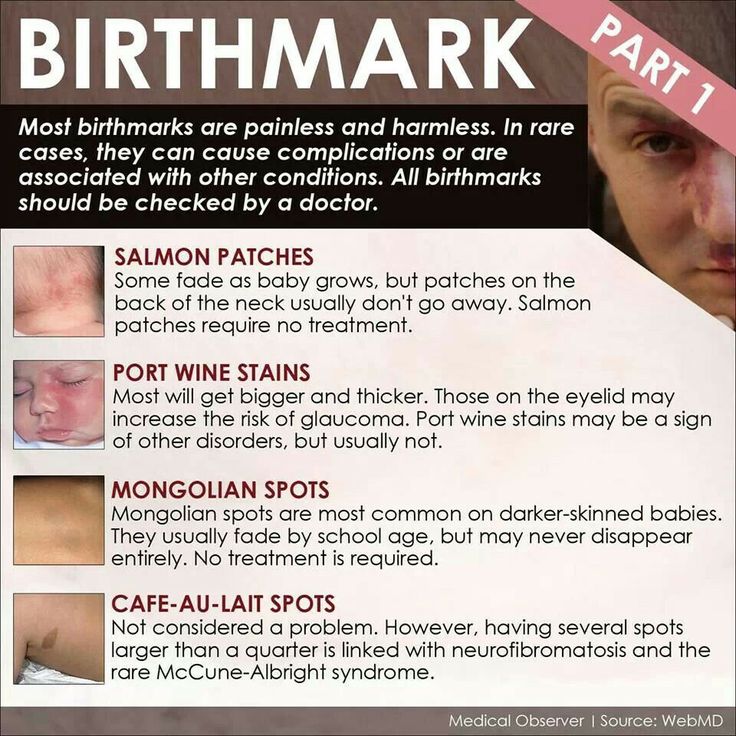How to teach your child number recognition
13 Hands-On Number Recognition Games Preschoolers will Love
- Share
Are you teaching your children to identify numbers? Here are some fun and interactive number recognition games for preschoolers and kindergarteners that you can play at home or in the classroom too.
If you’re wondering how to teach number recognition, the answer in early childhood is always through play.
Play is the natural way in which children learn. During play, children practice their skills and make sense of new knowledge and experiences. They develop early maths skills through play.
Remember that there are many aspects to learning about numbers. There is learning to count, which you can teach with number games and counting songs, and then there’s one-to-one correspondence, which is when a child reliably counts one object at a time.
Number recognition is about the physical appearance and shape of a number, as well as what value it represents.
These number recognition activities for preschoolers are a great place to start teaching the numbers from 1 to 10, but once you get going you’ll quickly notice opportunities all around you.
1. Parking CarsThis numbers game can be adapted to suit your children’s age, stage and interests.
Write numbers onto some toy cars and create a parking garage with numbered spaces. Your children can then match the number on the car with the number in the space and park the car correctly.
If they need more of a challenge replace the numerals with dots or words so that your kids can begin to recognise numbers being represented pictorially.
If they are not particularly interested in cars you could do a similar game with animals, dolls, or whatever it is that they enjoy playing with.
2. Car WashPut numbers on toy cars, or for a large-scale activity; bikes and scooters. Create a car wash for them with clothes, brushes, water and bubbles.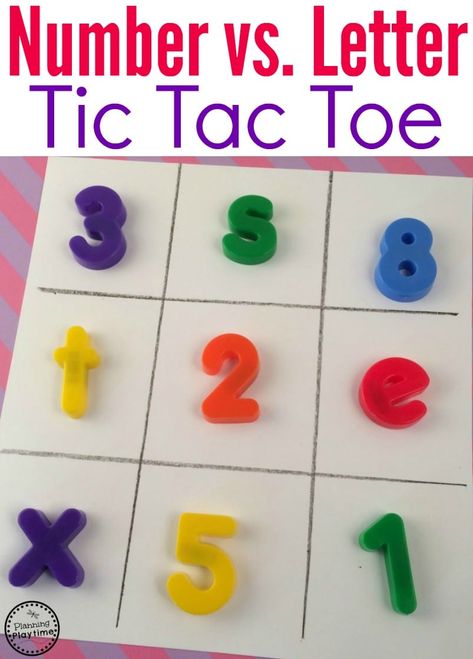
Your children are then in charge of ensuring that the cars, bikes, or scooters come to the car wash and get cleaned in the correct order. As well as recognising numerals, this activity gives kids the chance to begin learning about number order.
3. Hook a DuckThis fairground classic is great for numeral recognition. How you set this up is your choice.
If you have lots of ducks and something to hook them with then perhaps you could create a replica of the fairground game, otherwise feel free to improvise with what you have at hand.
A net or bowl to scoop objects out of the bath could work well – the important thing is for your children to be having fun and looking at numbers. You could allocate prizes to certain numbers if you want to.
4. Sidewalk ChalkSidewalk chalk is brilliant for larger-scale mark-making and games that get children using their gross motor skills.
Use sidewalk chalk to write out large numerals, then give kids a paintbrush and a pot of water and have them paint over the numerals with water to erase them.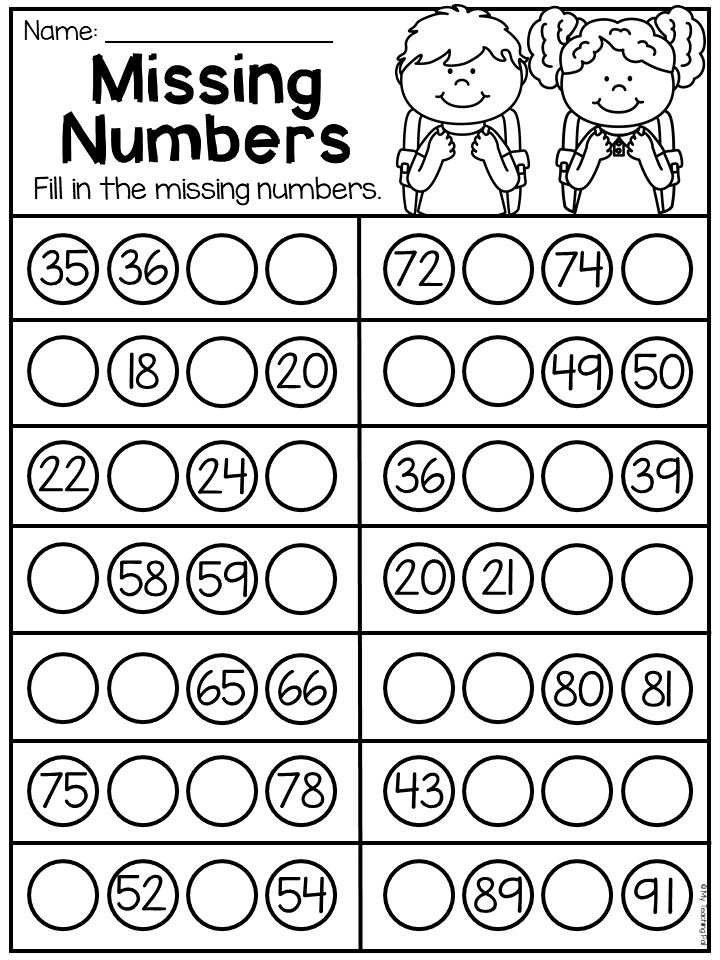
Not only does this help them to recognise numerals but also helps with the beginnings of formation.
5. Beads onto Pipe CleanersCreate a chart using beads and pipe cleaners. Attach 10 pipe cleaners to a piece of card and write numbers 1-10, one number above each pipe cleaner.
Provide children with a pot of beads and help them to count out the correct number on each pipe cleaner.
This activity gives them the opportunity to practise numeral recognition, counting and assigning the correct value to each numeral. It’s also brilliant for their fine motor skills.
6. Bean Bag TossLabel some buckets or baskets with numbers and provide your children with beanbags. Have them step back from the buckets and take aim and throw the bean bags in.
You can do quite a lot with this activity depending on your children’s age and ability, but on the most basic level, it encourages number recognition along with introducing the concept of more and less.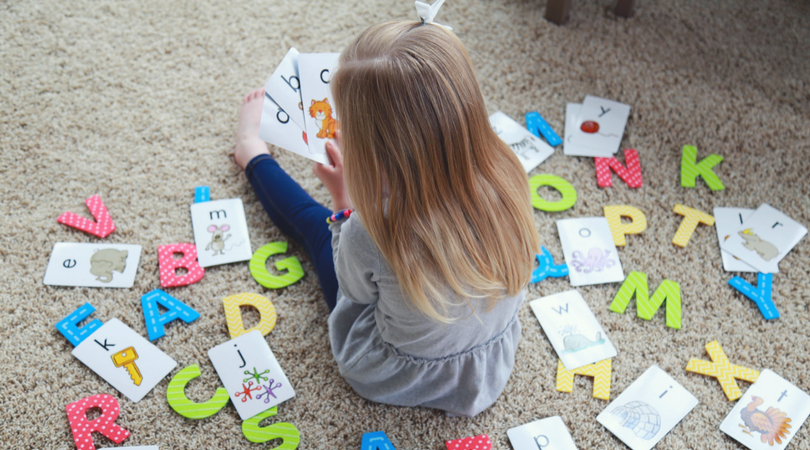
If your children are ready then you can model addition and play to win.
7. Putting Counters in PotsLabel pots with numerals and provide counters, craft beads, pom poms or really whatever you have at hand and encourage children to fill each pot with the correct number of items.
Again, this activity targets a variety of different skills as children recognise numerals, apply their understanding of value, and count out the correct number of items. This is another good one for fine motor skills.
8. Create an Outdoor Number LineChildren love to learn outdoors and on a large scale. Many teachers love using small number lines in the classroom to introduce the ideas of one more and one less but you can do the same outside.
Perhaps use chalk to draw out your number line and encourage children to locate different numerals – “Stand on number 8,” “Hop to number 4” and so on.
If appropriate you could discuss one more and one less.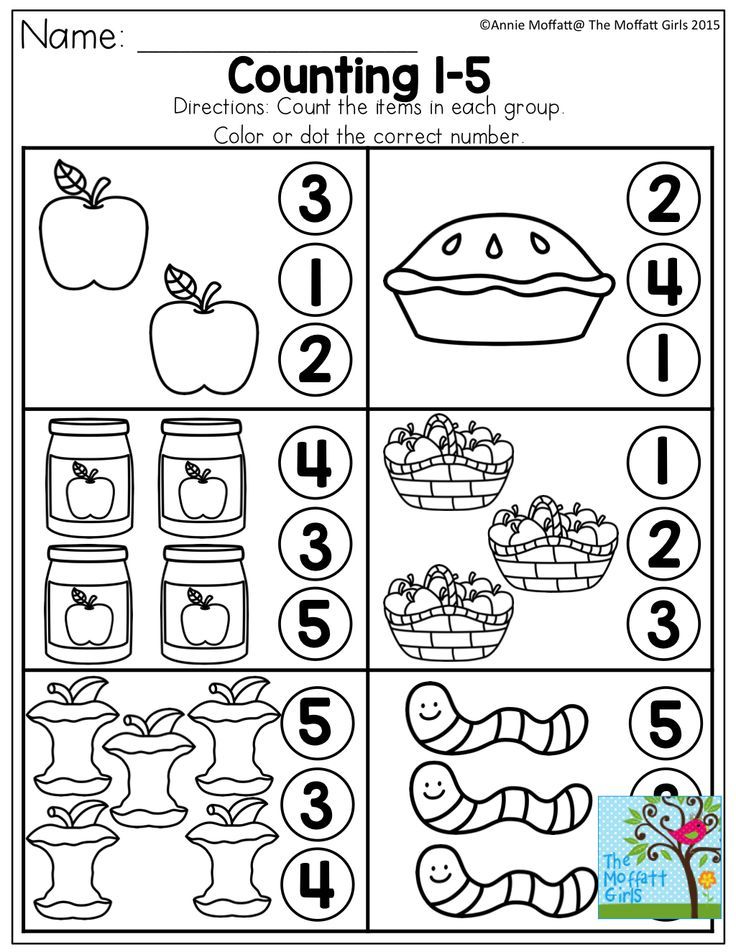 You could also use the number line to encourage counting by inviting your children to find 1 item to place next to the number 1, 2 items to place next to the number 2 and so on.
You could also use the number line to encourage counting by inviting your children to find 1 item to place next to the number 1, 2 items to place next to the number 2 and so on.
If your children like to be creative and artistic then this could work for them. Use nature to create the shapes of numbers.
This might mean drawing in the mud or sand, arranging leaves or stones or even noticing natural shapes in the environment. You could do this in your backyard or take a special walk.
Even better if you can take photos of your creations for your kids to look back on. This allows them to begin thinking about how numerals are formed in a fun and creative way.
10. HopscotchHopscotch is a real playground classic and it brings together a whole host of skills including gross motor skills.
Draw out a hopscotch grid and teach your children how to play, throwing a stone or stick to find out where they need to hop to, and then hopping and jumping to the end.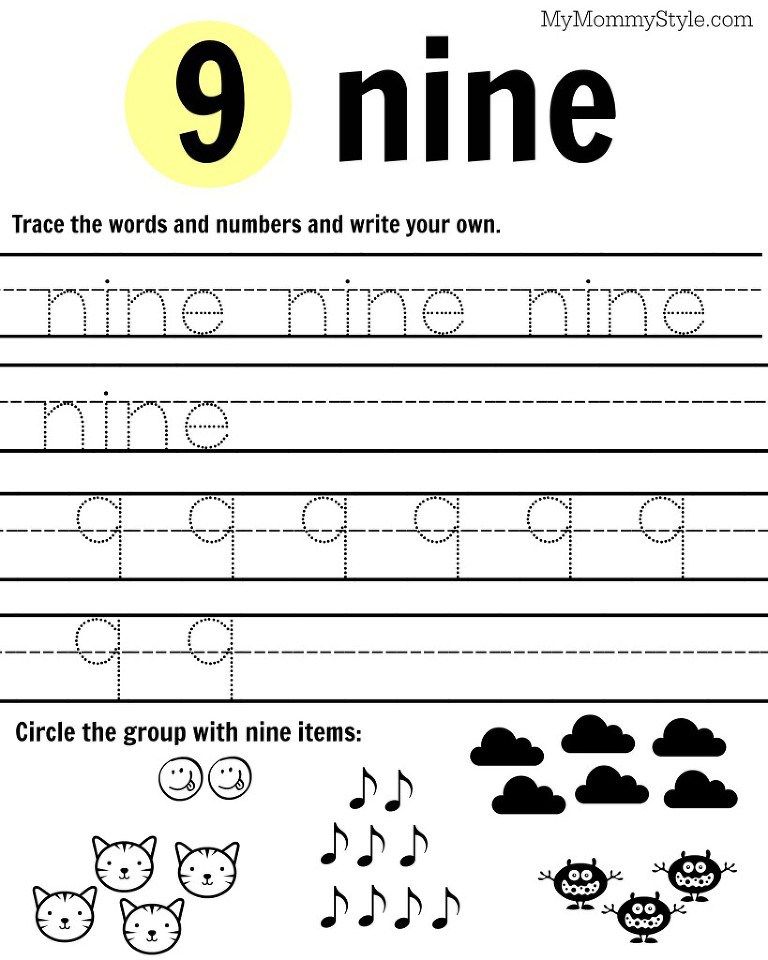
As well as reinforcing the recognition of numerals this also introduces the idea of higher and lower and allows kids to have fun while working with numbers.
Hopscotch is my favourite number activity for preschool kids.
11. Potion RecipesIf you like messy, creative play then this one’s for you.
Create a couple of ‘recipe cards’ using measurements expressed as numerals, for example – 2 cups of water and 3 pinecones, and have your children follow the recipe card, combining everything together in a big cauldron-like tub.
This taps into children’s imaginations and introduces the concept of measurement as well as numbers. Once they are finished following the recipes you have provided perhaps they will be ready to create their own recipes, which you can scribe for them.
12. Number SplatAll you need is a nice big roll of paper with numbers on it and a fly swat dipped in paint. You call out the numbers and children must swat them, thereby covering them in paint.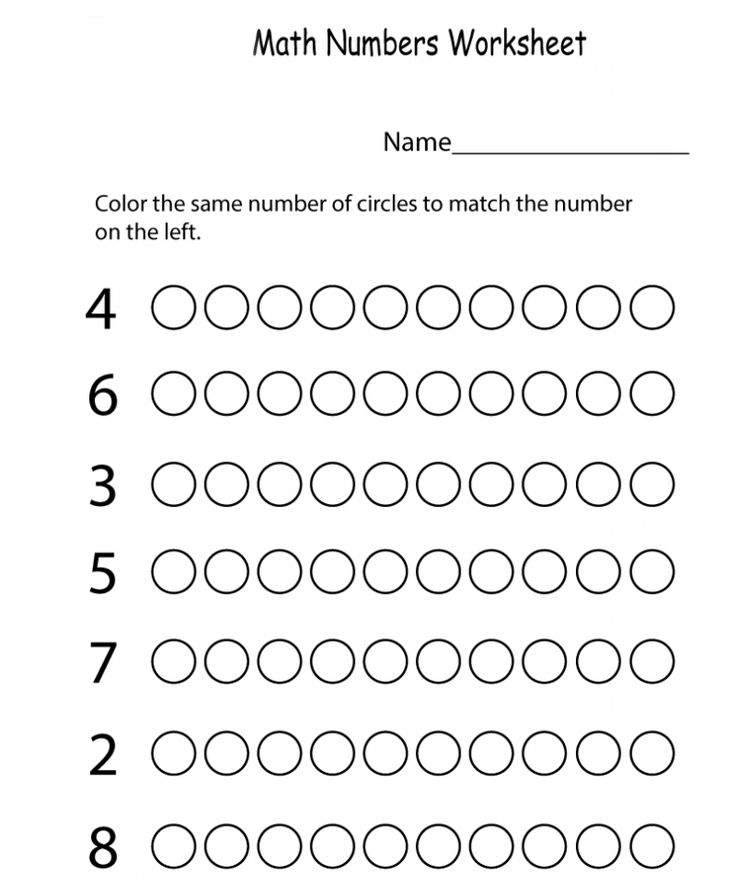 This is a really fun preschool number activity.
This is a really fun preschool number activity.
You can play just as easily without the paint, simply swatting at the numerals, but it’s far less fun than making a mess.
This activity is extremely physical helping to really embed the learning, and as children try to speed up, their ability to recognise numerals will improve too so that they’ll soon be able to recognise them at a glance.
13. BingoBingo is a great maths game for building up number awareness and can be enjoyed as a family. To start off with you can simply use numerals up to ten but as your children’s knowledge expands so can your game.
You can use what you have on hand – a bowl and folded-up pieces of paper, with highlighters – or you can go ahead and buy bingo pads and dabbers and bingo balls to add to the overall experience.
Here you will be building number recognition and as your kids aim to increase their speed, they will get quicker and quicker at recognising numbers and linking them to the number names being called out.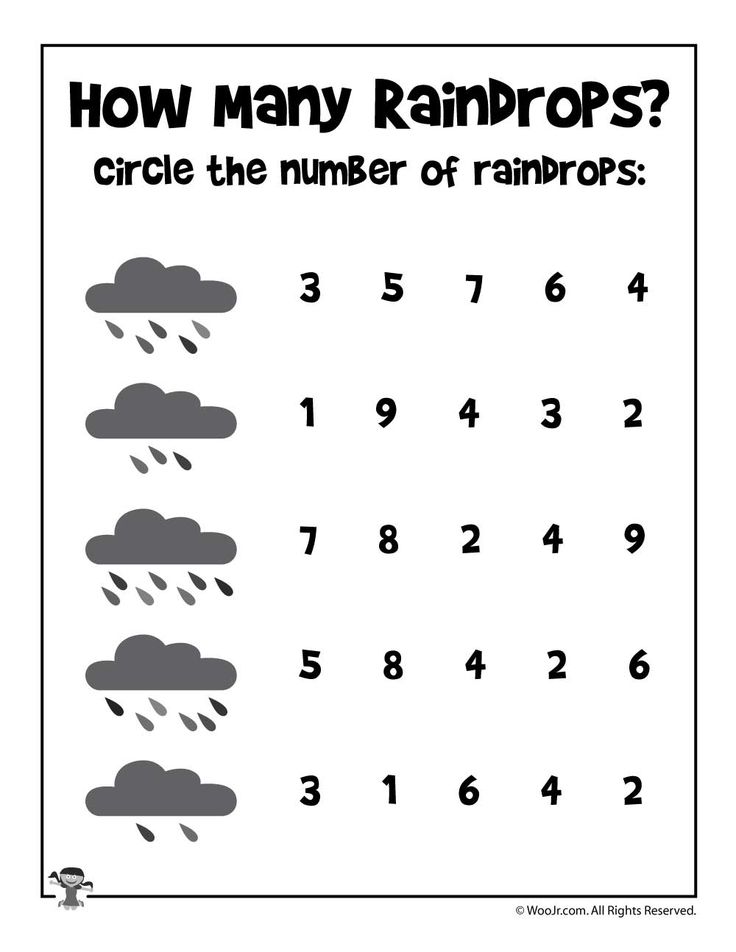
I hope you’ve enjoyed these number identification games for preschoolers. Here are some more fun math activities for preschoolers to build early mathematical skills.
Get FREE access to Printable Puzzles, Stories, Activity Packs and more!
Join Empowered Parents + and you’ll receive a downloadable set of printable puzzles, games and short stories, as well as the Learning Through Play Activity Pack which includes an entire year of activities for 3 to 6-year-olds.
Access is free forever.
Signing up for a free Grow account is fast and easy and will allow you to bookmark articles to read later, on this website as well as many websites worldwide that use Grow.
- Share
Recognizing Numbers: 15 Engaging Activities to Teach Number Recognition
Inside: Learning to recognize numbers is one of the first math skills your toddler, pre-schooler, or kindergartener will learn.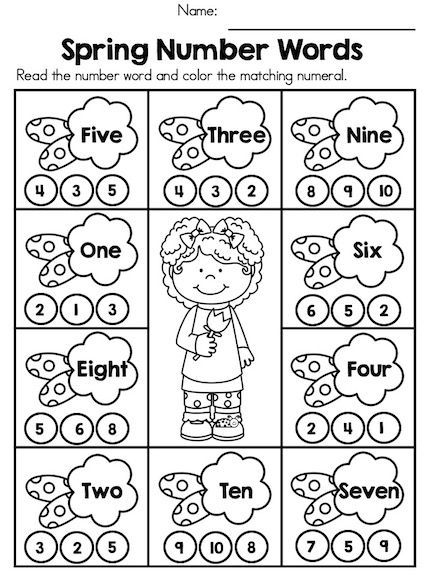 Help your child love learning to recognize numbers with these simple but engaging activities.
Help your child love learning to recognize numbers with these simple but engaging activities.
I watched his eyes scan the isles of the store. “What number is this? Where’s the 3?” He asked over and over.
Three. The most important number on the planet. Jacob was 3, and he was absolutely obsessed. He wanted to wear his (one and only) shirt with a three on it every day. He wanted to find 3’s everywhere we went, and if we were warming something up in the microwave, he better be able to push the button with the 3 on it.
I know it’s time to work on number recognition, but how do you make that fun? Flashcards aren’t exciting enough to hold the attention of a 3-year-old so I needed to get my creative juices flowing.
Why is it important to recognize numbers?Recognizing numbers is an important foundational math skill. Kids need to recognize numbers to add and subtract, write math problems, or even label items when learning to count.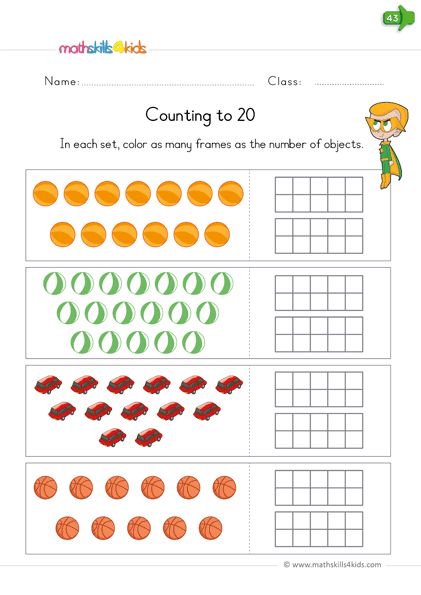
Recognizing numbers is also an important skill that will help your child be more independent in the classroom.
At school, many items around the classroom are labeled with numbers. Mailboxes, lockers, desks, folders, and in some cases, even the line your child will need to get in to get on the correct bus is labeled with a number.
Number recognition is an essential beginning math skill that your child will need to learn early on.
Are you tired of hearing “It’s TOO HARD!” followed by a meltdown?
Using this one simple phrase you’ll get in this powerful lesson, you’ll not only be able to help your kiddo not give up but you’ll:
>Activate their superpower of perseverance so that they can turn around a meltdown and keep trying
>Inspire them to use perseverance…even when it’s hard
>Teach them to recognize the warning signs of giving up, and how to turn it around by taking control of their choices.
Grab your powerful FREE video lesson to teach your kiddo one of the most powerful keys to perseverance.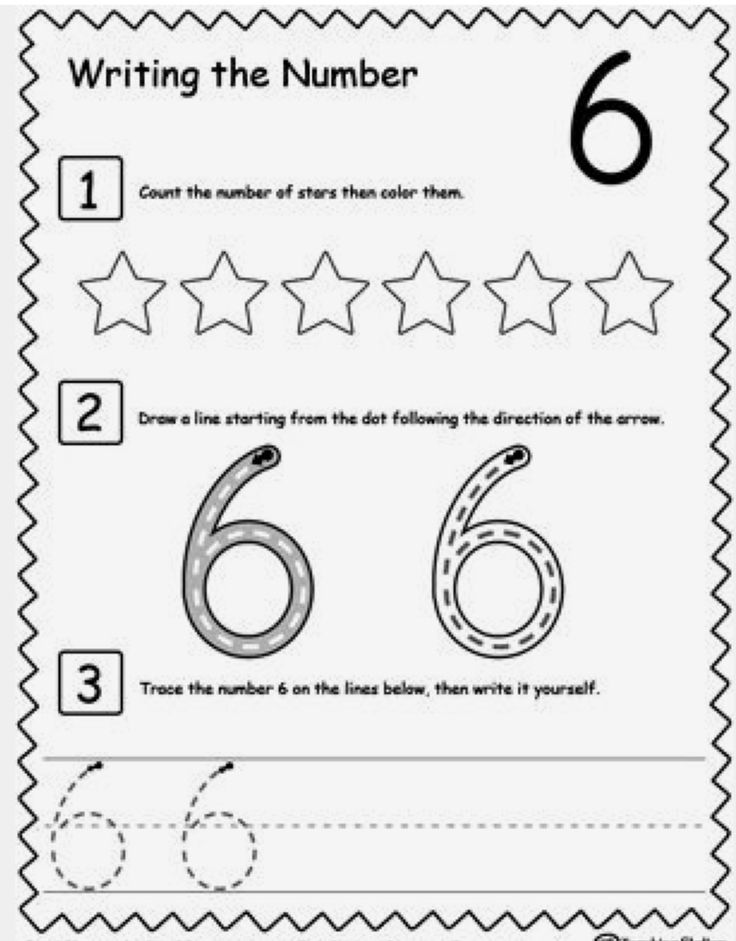
A child’s readiness to recognize numbers is more based on their previous academic experiences instead of a specific age.
A child who is 3 but has had no introduction to counting or numbers will not be ready, but a child who may already be able to count to 10 (or higher) will be ready to start learning to recognize their numbers.
Children are typically introduced to number recognition between 3 and 5 years old.
If you are looking for more guidance on what specific skills to teach during what stage, you may find our Education in the Early Years a helpful resource to know what skills to work on when to fully prepare your child for pre-school and kindergarten.
How do you know if a child is ready to begin recognizing numbers?When your child can rote count or count objects, you can start teaching your child to recognize numbers.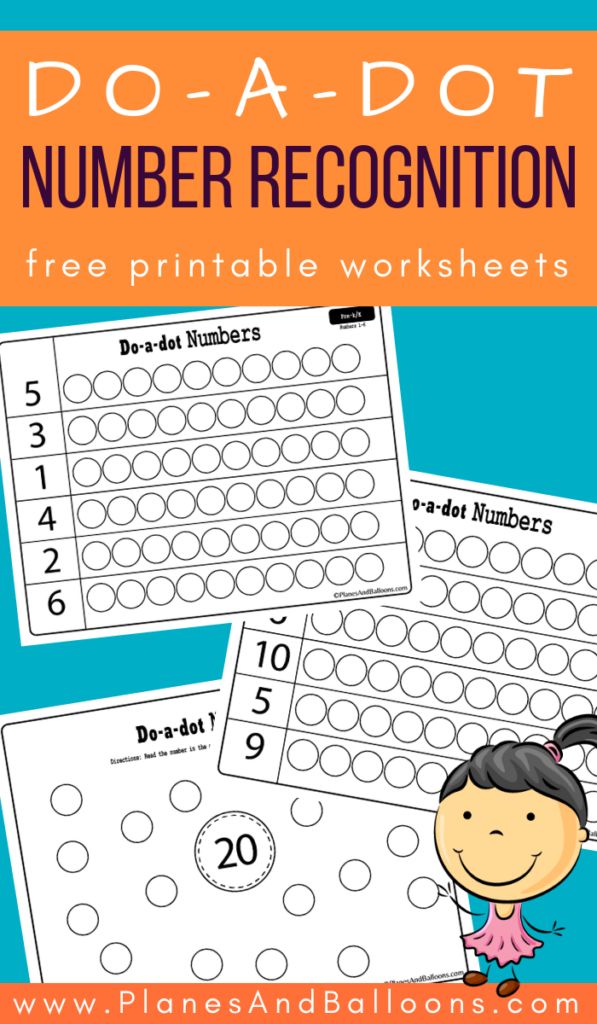
Ideally, they will have been introduced to this skill before beginning kindergarten, although they don’t have to have them mastered.
Kindergarten teachers usually teach number recognition to 10 in the fall of the kindergarten year.
How can I help my child recognize numbers?Start small. Start with recognizing numbers 1-3, and when they have that, work on recognizing numbers 1-5. After your child can recognize numbers 1-5 (out of order) work on 1-10.
When practicing number recognition, practice the numbers out of order. If you use flashcards (we will talk about some better alternatives below) don’t practice the flashcards in order.
If the numbers are in sequential order, your child can just count and you won’t know if they are counting or actually recognizing the numbers. By mixing up the numbers (instead of 1, 2, 3 – practice recognizing numbers 2, 1, 3), you will know your child is learning the number.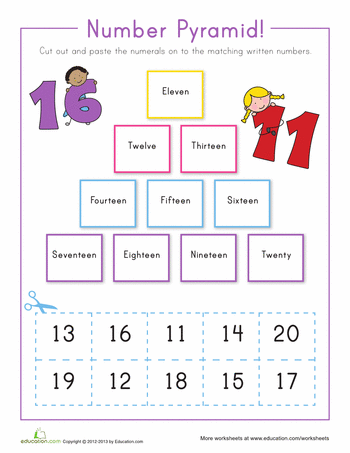
Continue to add on new numbers while reviewing the numbers already learned, instead of focusing on only new numbers. After your child has learned 1-5, and you are ready to start practicing numbers up to 10, don’t just practice 6-10. Continue to practice 1-5 as well because kids need constant review.
How do you teach number recognition?Kids learn best when they are using hands-on activities and having fun. Here are some activities your child will love that teach number recognition – without a lot of prep or work on your end.
As an Amazon Associate, I earn from qualifying purchases at no additional cost to you.
Use What You Already DoLife is busy. You don’t need to add a ton of activities to what you already do at home in order to teach your kiddo number recognition. Making learning meaningful by sneaking it into your daily routine is one of the best ways kids learn.
Jacob learned his numbers to 10 by looking for numbers that appeared in our daily routine.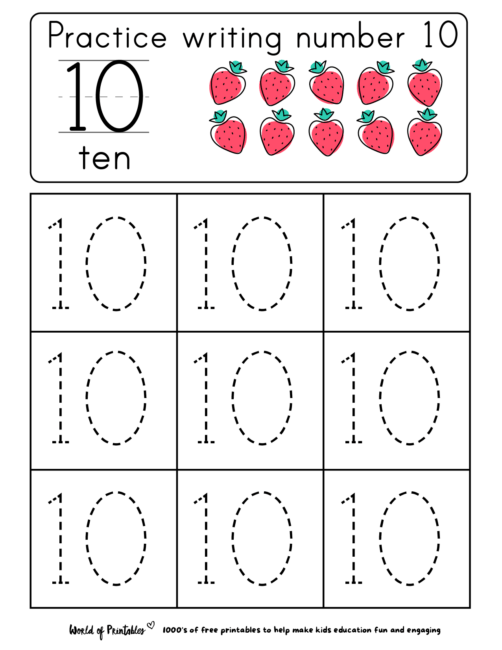 Recognizing numbers on the microwave, at the grocery store, on car license plates, and even on clothing made learning meaningful and exciting because they were in his natural environment. (Plus this took no preparation from me!)
Recognizing numbers on the microwave, at the grocery store, on car license plates, and even on clothing made learning meaningful and exciting because they were in his natural environment. (Plus this took no preparation from me!)
- Whenever I use the microwave, he presses the buttons. I ask him to “find the three” and then “press the triangle.” He gets shape practice out of it too, not to mention when you’re three, pushing buttons is pretty much the coolest thing ever.
- At the grocery store or driving through a parking lot, go on a number hunt. Ask your kiddo to find the number 5.
- At bath time, play with bath numbers. Similar to how we taught Jacob letter recognition, we made up games to play in the bath. Have your kiddo use a water squirter to spray the number you call out. Hold up a number, have your kiddo identify it, and flick it at them. (It makes it more fun when the number sticks to their belly!) Kids also love to quiz you on numbers.
 They have to be paying attention, sometimes you might forget and give a wrong answer!
They have to be paying attention, sometimes you might forget and give a wrong answer!
Use Your Body
- Air Write: The more we can use our bodies to learn the better we learn. Using your pointer finger, write the number in the air, and have your child copy you. Narrate what you are doing as you do it. So for the number 4, I would say “Down and over, pick your finger up, back to the top, and down some more!”
- Sensory Write: Fill a tray with shaving cream, sand, or put paint in a baggie, and have your child use their finger to write the numbers. The more senses we use to learn the better we learn…and the more fun it is!
- Use the Water Table: Toss foam numbers in the water table and have your child fish for them, catch them, or simply put the correct number of objects with each number.
Get Hands-On
- Number Matching: You can do this with anything you have around your house.
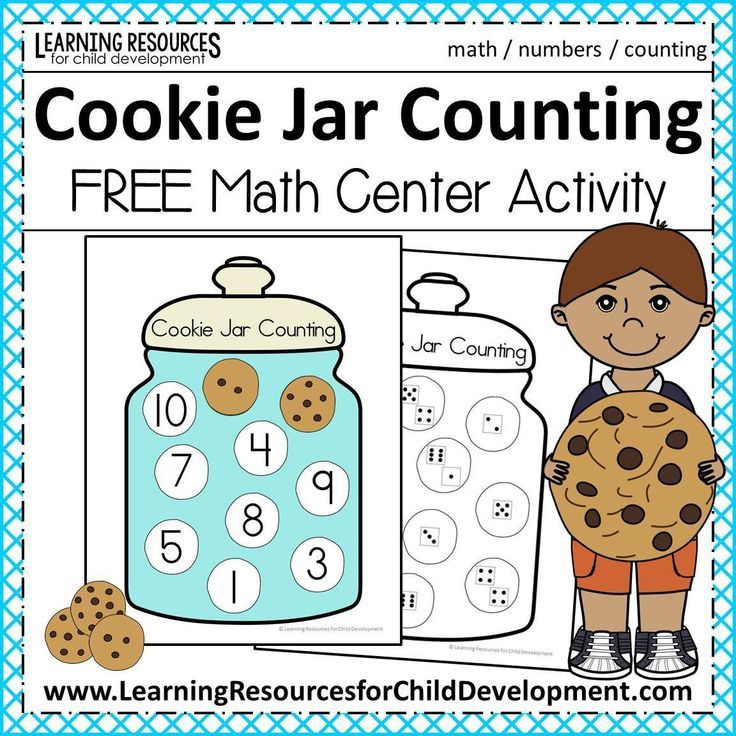 Write numbers on post-it notes, and have your child find that many items to go with the number. For the number 3, your child would find 3 toys and match the group of toys with the written number 3. Some other fun toys you could use are:
Write numbers on post-it notes, and have your child find that many items to go with the number. For the number 3, your child would find 3 toys and match the group of toys with the written number 3. Some other fun toys you could use are:
This frog balance toy is a great way to learn number recognition. In a math training I attended as a kindergarten teacher, they taught us to teach kids to think about math equations as a balance scale. By doing this early on, we will set them up for success in algebra and higher-level math courses. Learning that five objects is the same as the number ‘5’ is a great way to start this way of thinking!
Playfoam was one of the most popular items I had in my kindergarten classroom. Kids loved to manipulate it, playing with it is great fine motor practice, and they can practice number recognition with these number cards.
Everything is more fun with cookies, especially these self-checking number recognition cookies!
These Number-Bots were another favorite in my kindergarten classroom.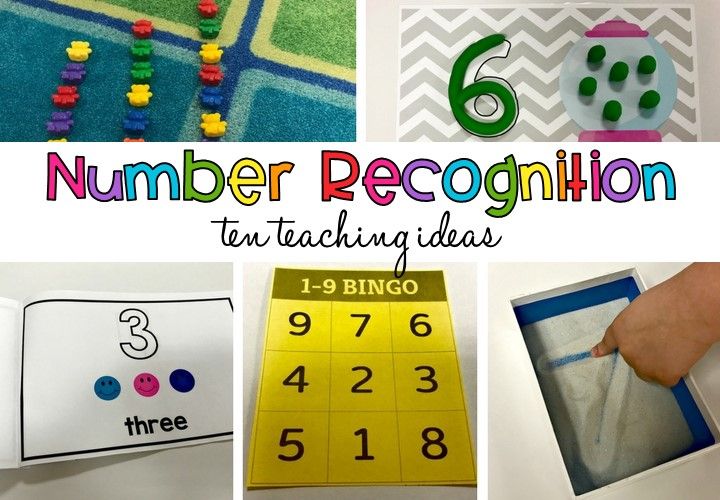 The kids couldn’t get enough of them.
The kids couldn’t get enough of them.
- Chalk: We love to take our learning outside. The more you can make learning look like play, the better your child will learn. Write numbers (out of order) on the driveway with chalk. Have your child jump on the number as you call it out. You can also switch it up and tell them how you want them to travel to the number. Tell them to run, walk, hop, skip, crab walk, etc. to the number 3. When their interest in this is over, have them trace the numbers with a different color of chalk. Hop-Scotch is also a great way to practice number recognition using chalk.
- I Spy: This is one of my favorite games for on-the-go! Look at license plates, on the menu, around the store, etc., and spy numbers. When your child spies numbers, sometimes answer wrong and see if they catch your mistake.
- Puzzles: Puzzles are great for kids. They promote problem solving, creativity, and perseverance.
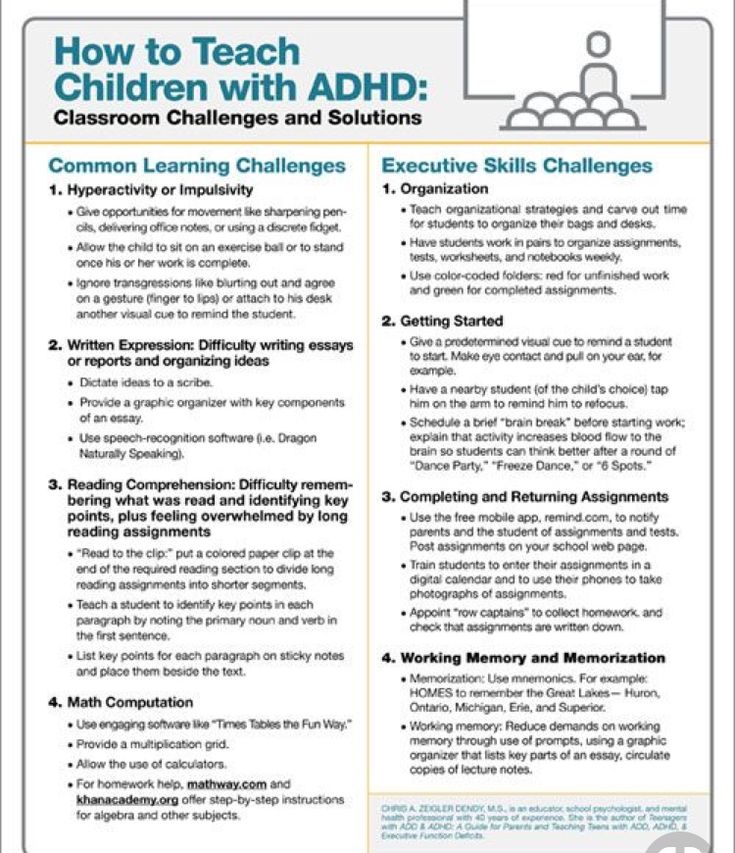 Our favorite puzzles are:
Our favorite puzzles are:
These Match It puzzle pieces are perfect for number recognition. They are self-correcting to help your kids do the activity independently.
Another favorite self-correcting puzzle is from Melissa and Doug. We love playing with this wooden puzzle that has pictures of familiar objects to get kiddos excited about learning.
Kids can’t read yet, but this self-checking puzzle will also be helpful when teaching number words.
When All Else Fails, Play a Game
No seriously, games are one of the best ways to learn!
- Games: We love games, and they teach so much more than academics. Games teach turn-taking, process, following rules, cooperation, how to win well, how to lose well, and much more. Many important social skills are learned through games.
Games with dice will help kids learn to recognize numbers. Learning the pattern of dots is important for kids to learn to recognize, but while you are working on number recognition replace the dots with the written number.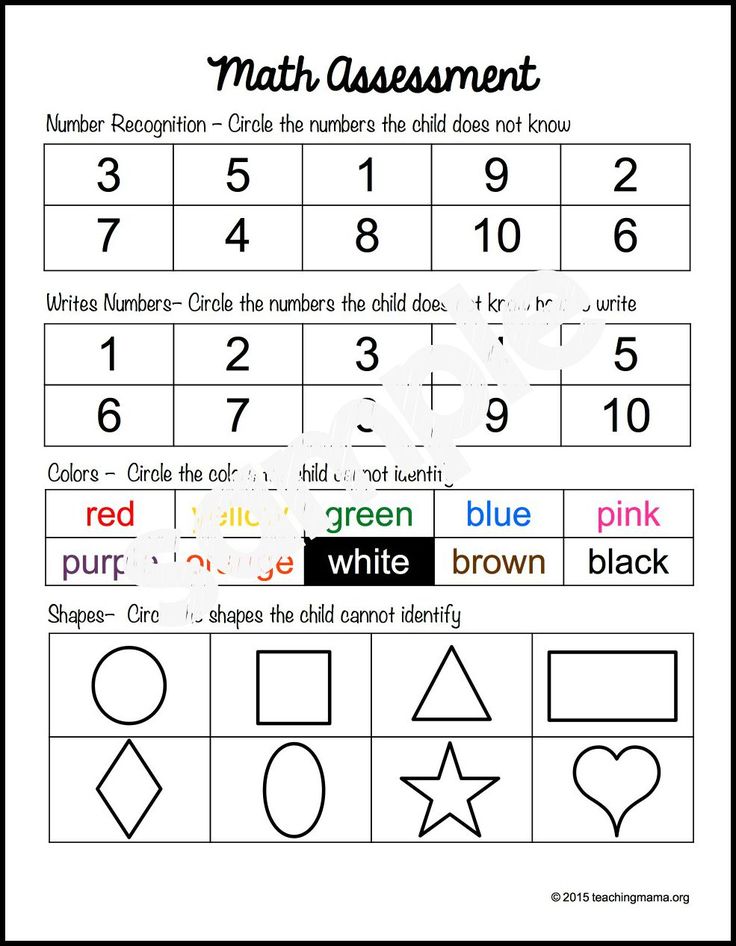 You can do this by writing the numbers on a sticker or piece of tape and covering the dots.
You can do this by writing the numbers on a sticker or piece of tape and covering the dots.
Add number cards to any game to make it educational. To make number cards, write numbers on index cards or cardstock. The first step of your turn is taking a number card and identifying the number. After that, continue with the normal procedure for your turn in the game.
We love to make Candy Land a little more interesting with a deck of number cards. Draw a number card and identify the number on the card before drawing our color card and moving the piece.
Some of our favorite number recognition games are:
Shelby’s Snack Shack is a fun number recognition game. Each player spins the spinner and collects the number of snacks the spinner indicates from the beach. The player with the most snacks at the end wins.
Younger players will love this Acorn Soup game. Follow the recipe cards to make acorn soup!
One of our family’s all-time favorite games, kids get their wiggles out to feed the Woozle gross foods like sand pizza and toenail cupcakes. You will have to add number recognition cards to this game to practice number recognition, but it’s worth it. This game also has different levels of play, so kids of different ages can play together and it will last your family for years to come.
You will have to add number recognition cards to this game to practice number recognition, but it’s worth it. This game also has different levels of play, so kids of different ages can play together and it will last your family for years to come.
This game is great for teaching number recognition, subitizing, and counting!
Get Crafty
- Rainbow Write: For older kids who are writing already, write the numbers out on a piece of paper. Have them trace the numbers with different colors. First, trace all numbers with yellow, and then trace again with blue, and again with red. By the time they are finished, the numbers will look like a rainbow.
- Use Dot Stickers: Kids love using stickers, why not use them to learn? Dot stickers are inexpensive and simple to use. Draw the number in different forms on the dot stickers. Using tally marks, the written numeral, dots, dice patterns, shapes, etc. This is important because it helps with subitizing, an important skill that strengthens number sense.

- Have your child match the stickers to the correct number. You can do this with large numbers (like the picture above), draw a train and on each train car write a number, or even use ice cream cones and the dot stickers as ice cream scoops.
- For more ideas on how to use dot stickers, check out 13 Genius Dot Sticker Learning Activities That Will Delight Preschoolers
- Have your child match the stickers to the correct number. You can do this with large numbers (like the picture above), draw a train and on each train car write a number, or even use ice cream cones and the dot stickers as ice cream scoops.
Most importantly, keep it fun!
Remember, the more fun you can make learning, the easier it will be! Our goal (always, but especially with littles) is to get them to fall in love with learning. If they are feeling pressured or stressed about learning they won’t enjoy it, and learning will become more difficult. Keeping learning fun and fitting it into your daily routine will help your child be more successful, and keep it less stressful for you!
Want More?If you liked this, you’ll love:
Best Books for Pre-Schoolers
How to Teach Your Child Letter Recognition
How to Teach Your Child to Write Their Name
Addition for Preschoolers
Your TurnWhat are your favorite number recognition activities?
How to teach a child to count
1741
Learning numbers with a child and teaching him to count is not an easy task.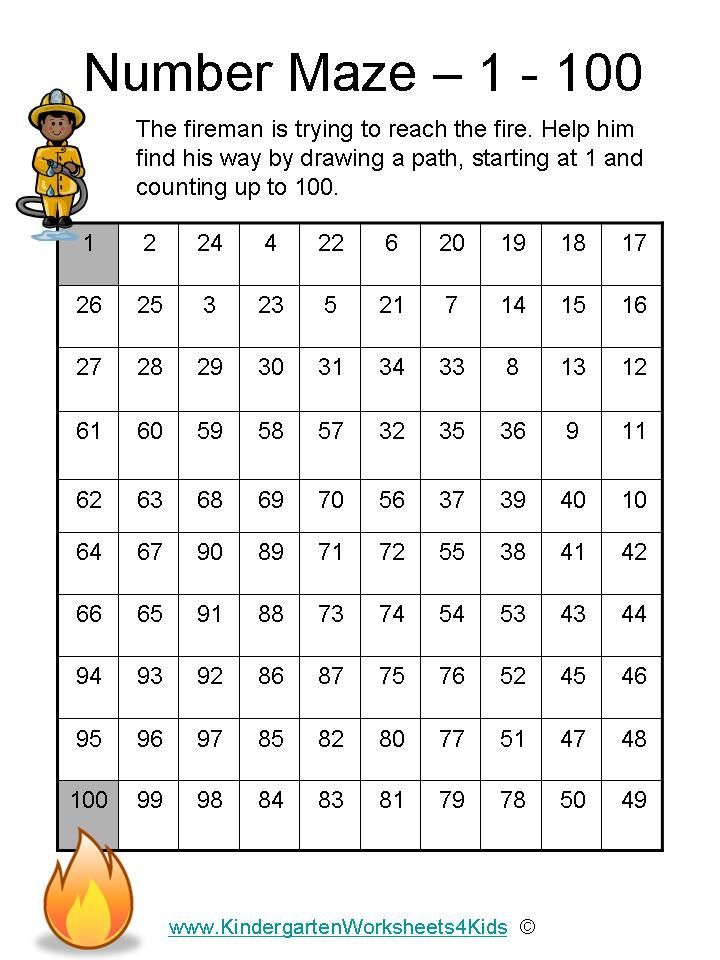 But any parent knows that you need to get acquainted with mathematics at a preschool age. If a kid at 5-6 years old masters the composition of the number and counting within ten, then it is more likely that at school it will be easier for him to cope with tasks.
But any parent knows that you need to get acquainted with mathematics at a preschool age. If a kid at 5-6 years old masters the composition of the number and counting within ten, then it is more likely that at school it will be easier for him to cope with tasks.
How to interest a child in mathematics?
First, follow the basic rules:
- 1. It is better to learn numbers and numbers not at the table, but in the game or immediately in practice. For example, have the child count the ingredients for a cake or a button on a shirt.
- 2. Practice when the baby is in a good mood. Try to evoke positive emotions in him. So the information is better remembered.
- 3. First, choose easy examples so that the child can cope with them. And when he successfully masters the first task, he will definitely want to repeat the success. At the same time, do not forget to praise the child. nine0014
-
develop attention, memory, thinking, speech - namely, this is the basis for successful schooling;
- nine0002 help to learn letters and numbers, learn to read, count, solve examples and problems, get acquainted with the basics of the world around;
-
provide quality preparation of the child for school;
-
allow primary school students to master and consolidate the most important and complex topics of the school curriculum;
-
broaden the horizons of children and in an accessible form introduce them to the basics of various sciences (biology, geography, physics, chemistry). nine0004
- 4. Practice constantly, each time using something new.
 This is how you maintain interest and form a habit.
This is how you maintain interest and form a habit. - 5. If the child fails to solve the task - do not get annoyed, but try to explain in practice. After all, the main thing in 5 years is not to learn the basics of mathematics, but to form an interest in studying it in the future.
How to learn numbers:
Draw and hang in the child's room a number series from 1 to 20. It will always be in front of your eyes and will be remembered. Play the game of "jumping finger": point your finger in a chaotic order of the numbers from this row and ask for a number. Draw separate cards with numbers from 1 to 20 and ask the child to name them. In the first case, the baby remembers the ordinal arrangement of numbers, and in the second, he learns to recognize them randomly. nine0004
Make these cards: draw a number on dark cardboard with PVA glue, dip in semolina and dry. We work with these cards like this: the child circles the number with his finger as it should be written according to the rules, and pronounces the association aloud. For example, the number 1: first draw a tail with your finger from the bottom up, and then a straight stick down, saying: "Beak, leg." For numbers 2 - "Head, neck, tail"; 4 - "Back, seat, leg", etc. Come up with your own associations to better remember. In this exercise, children visually see the number, feel it tactilely, remember the spelling, speak out loud and reinforce it with associations. nine0004
For example, the number 1: first draw a tail with your finger from the bottom up, and then a straight stick down, saying: "Beak, leg." For numbers 2 - "Head, neck, tail"; 4 - "Back, seat, leg", etc. Come up with your own associations to better remember. In this exercise, children visually see the number, feel it tactilely, remember the spelling, speak out loud and reinforce it with associations. nine0004
You can get acquainted with the numbers and complete tasks online to consolidate knowledge on our website in the "Counting and Numbers" section.
How to teach counting:
In order for a child to learn to count, he must master the composition of the number, that is, understand that the number 5, for example, consists of a combination of the numbers 2 and 3, 1 and 4, etc. And for this, we first show the numerical value of the number 5 on real identical objects. For example, 5 is 5 spoons, apples, etc.
Play the game "Let's share" as often as possible. Take 5 sweets and offer to share between two.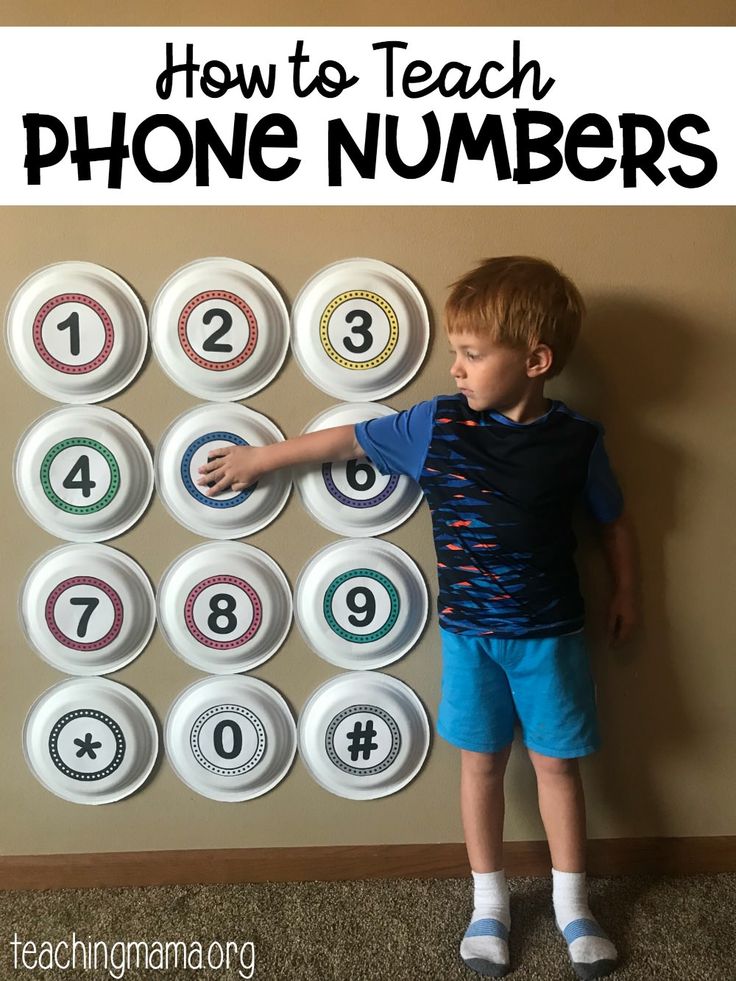 Ask the child: "How will we divide the sweets? How much will you take for yourself, and how much will you give to me?" Show that 5 sweets can be divided like this: 1 for mom, and 4 for baby, 2-3, 3-2, 4-1. And be sure to show that you are not counting empty numbers, but numbers that represent real candies. nine0004
Ask the child: "How will we divide the sweets? How much will you take for yourself, and how much will you give to me?" Show that 5 sweets can be divided like this: 1 for mom, and 4 for baby, 2-3, 3-2, 4-1. And be sure to show that you are not counting empty numbers, but numbers that represent real candies. nine0004
You can also play this game: take 5 buttons (or other small items), first show the child that there are 5 of them, count with your finger. Then hide your palms with buttons behind your back and ask the child: “If I have 2 buttons in my right hand, how many in my left?” And then invite the kid to ask you a riddle. Guessing, sometimes "make mistakes" - children love to "catch" adults on mistakes.
Having mastered the composition of the number, the child will easily understand the basics of addition and subtraction.
nine0002 Tasks for ordinal counting and comparison for preschoolers are recommended to be completed on the page "Assignments in mathematics for children 5-6 years old. "
" Did you like it? Share with friends:
Online classes on the Razumeikin website:
How to teach a child numbers: learning to count
How to teach a child numbers: recognize them, correlate them with the number of objects? After all, in ordinary life you often have to divide sweets or a whole pie equally into parts, add and subtract - knowledge of numbers and counting skills will not interfere here (so as not to deprive yourself, your loved one).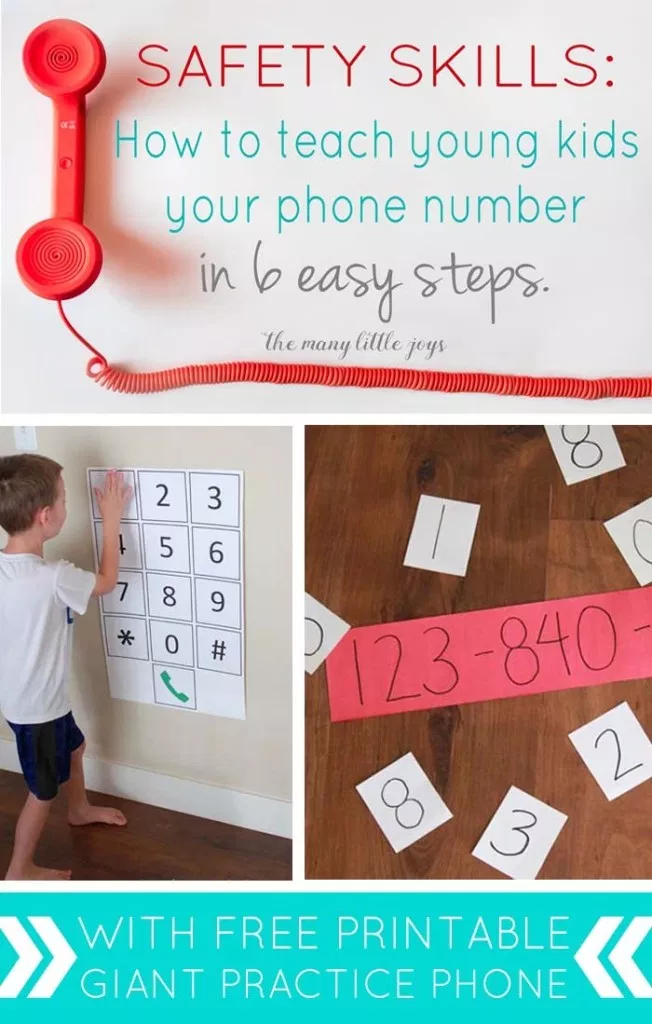 Numbers are the world of adults, children understand better when everything is visual and preferably tasty :)) Learning to count - while playing!
Numbers are the world of adults, children understand better when everything is visual and preferably tasty :)) Learning to count - while playing!
www.neboleem.net
Remembering numbers should be conscious, not mechanical. The composition of the number and counting within the first ten is the basis of the basics. Therefore, dear parents, we turn on the imagination and come up with fun games and simple educational aids for mental counting.
So, the first thing a baby should master is recognition of numbers. To teach a child numbers, use sight, hearing, touch, preferably all at once - this is more effective.
Numbers live in our house: how to teach a child to count
How to make friends with numbers? You need to get to know them. Try to study 1-3 numbers every week. Come up with all kinds of tasks so that the child learns to recognize them, correlate them with the number of objects, write.
www.babyblog.ru
Numbers are everywhere! Make cards with the image of numbers and hang them around the house at the level of the child's eyes.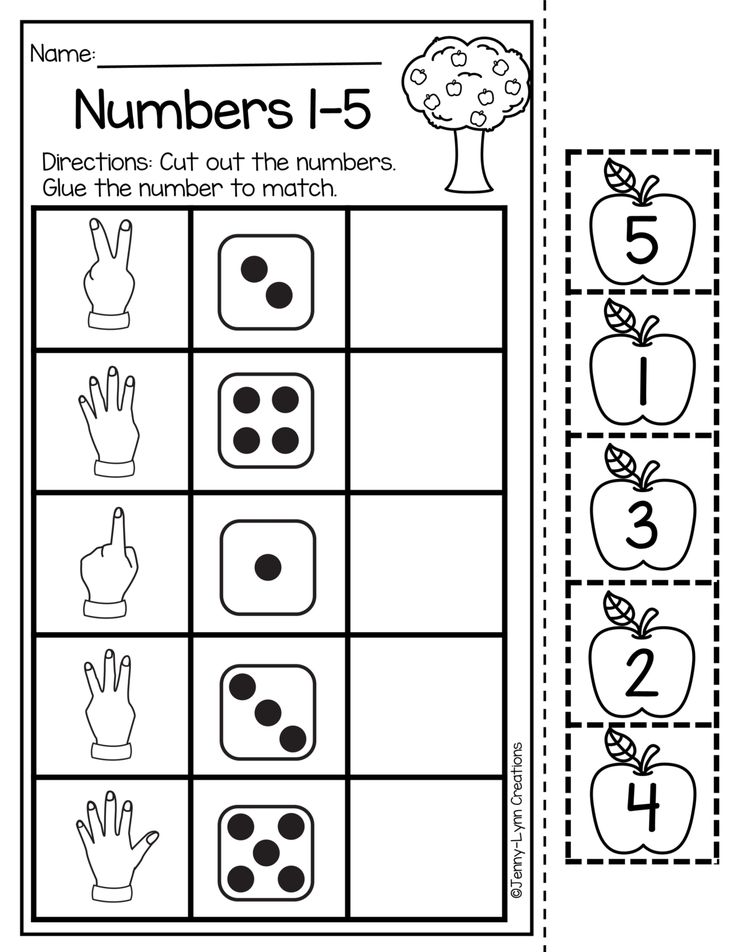
kapitoshi.ru
Whenever possible, focus on them, ask them to bring as much as it says on the card, give, take, eat, count, and so on. The kid must learn to correlate the visual image of a number with its quantitative value. nine0004
Number cards can be sewn from felt. It will be possible not to be afraid that the baby will tear or crush the cardboard pictures.
And here is an example of loto, when you can not only learn to count, but also memorize colors.
While mom is in the kitchen, the baby can play with cereals, and at the same time get to know the numbers better.
Collect beautiful leaves while walking and make cards with your child. Memorize the names of trees - and learn to count! nine0004
Natural materials will be great helpers in learning to count.
How to teach a child to numbers at 4 years old
Children from three to five can already recognize numbers and master sequential counting.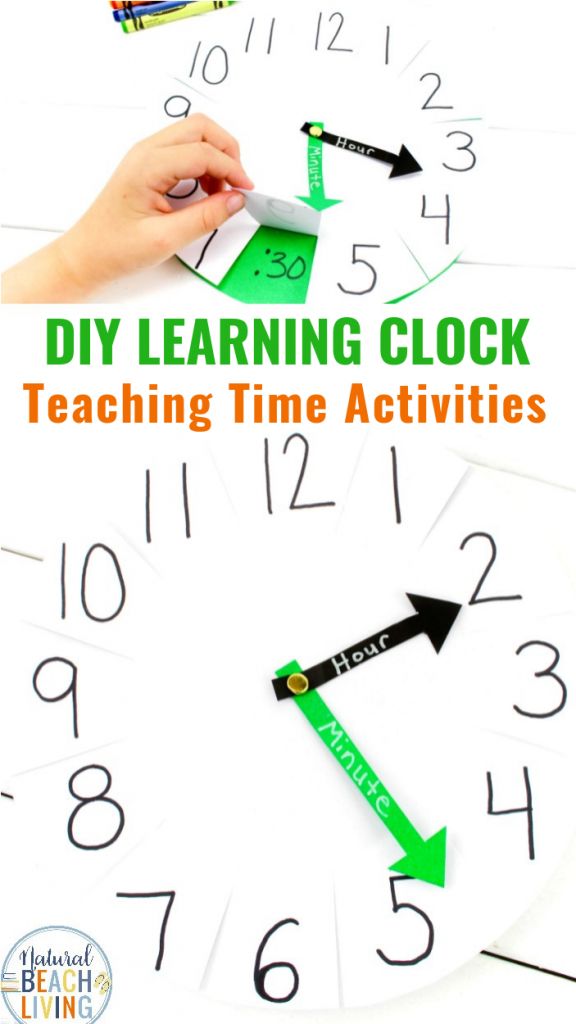 The main thing is not to miss the moment and use the child's interest in mathematics.
The main thing is not to miss the moment and use the child's interest in mathematics.
deti-online.com
Make cards with funny numbers and ask your child to put them on the table in the correct order.
Clothespin games are fun. Attach a number plate to each clothespin and let your child learn to match the number with the number of dots. nine0004
If you want to raise a genius, learn English along with Russian. All tasks can be performed by analogy.
It is not necessary to chase after purchased games, you can do many things with your own hands - this will not make them less useful and developing.
Your little one will surely enjoy gluing buttons on plasticine or counting apples on a tree using a special ruler and window.
There are many methods by which you can teach a child to memorize numbers and count. And it is not at all necessary to rely on experienced teachers and expensive developmental aids.